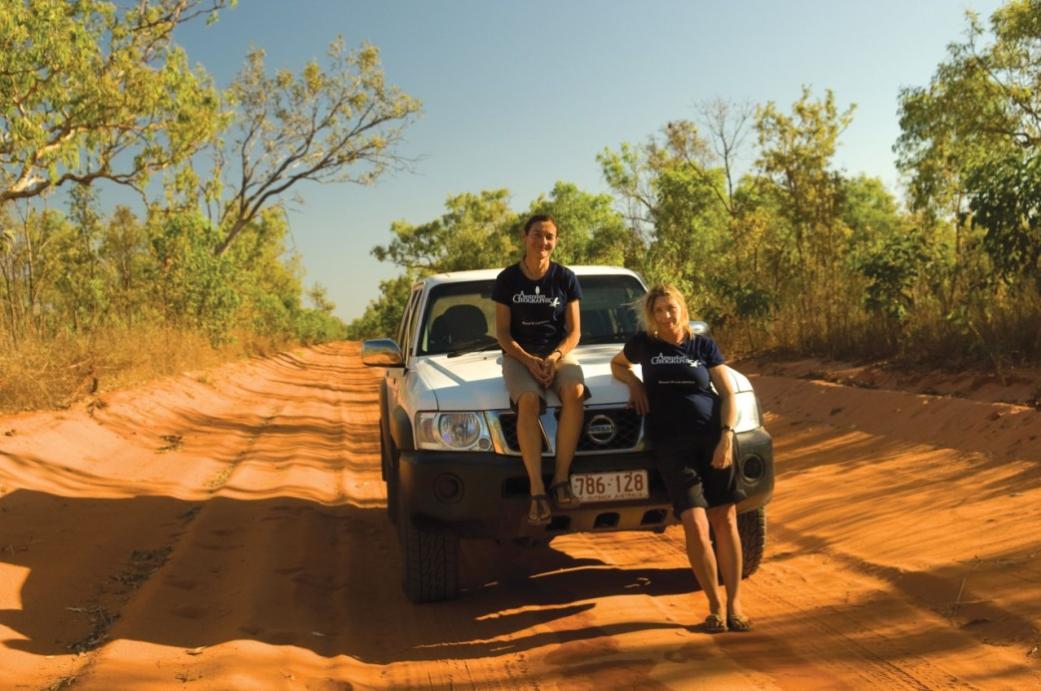September 3 - 9, 2017: Issue 328
Sally Mayman and Dale Kentwell
Seeing Saltwater Country
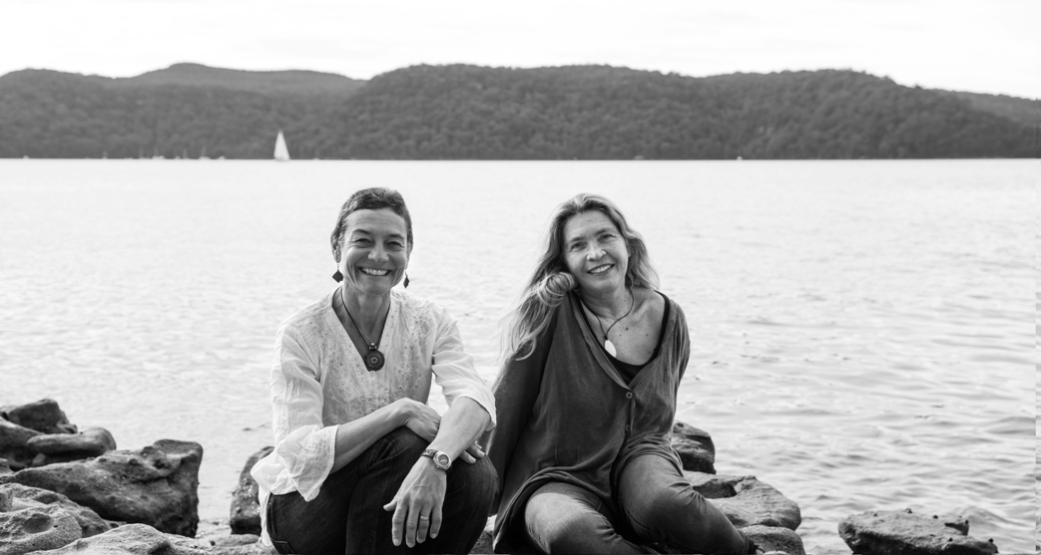
Sally Mayman and Dale Kentwell
"Sally Mayman and Dale Kentwell, with the camera and the canvas, have beautifully conveyed in an honest and warm-hearted way what country means to the Aboriginal people living on Saltwater Country in the Dampier Peninsula. Listen to their stories. Listen to the country sing to us all." - Dr. Jeff McMullen AM
Two local creatives have recently completed an odyssey of exploration and empowering others while being gifted with meeting wonderful people in a beautiful place. Out of this work this two ladies, both already mothers, have given birth to another child - the book released on September 1st, 2017 -Seeing Saltwater Country.
The Seeing Saltwater Country project began in 2009 when artists Sally Mayman and Dale Kentwell collaborated with the local indigenous peoples of the Dampier Peninsula, Western Australia. The resultant exhibition of both photographs and painting explores connection to country highlighting a unique Saltwater lifestyle. The initial collaborations were at the time of the proposed gas hub at James Price point.
A beautiful, timely and thought provoking body of work, explores through stories and language, portraits and landscape, the strength and humanity within the remote communities.
The exhibition was first shown at Manly Regional Gallery and Museum in 2010 as part of the Local Guringai Festival and has recently been acquired by the State Library of Western Australia for their permanent collection with a publishing contract through Fremantle Press.
You can meet Dale and Sally at Berkelouw Books on September 21st - details below. As are where you can get your hands on this book.
This week an insight into where these ladies came from and where they're going to through this great work.
Dale Kentwell
Where did you grow up?
I grew up in western Sydney, Castle Hill/ Kellyville on a bushland property, on the border of Sydney Sandstone / Cumberland Plain. Dad was a horticulturist and mum a florist, we had a rose nursery. We spent our time playing in the bush, swimming in the creek, building bush houses out of sticks, it was pretty wild, but idyllic. When the land was rezoned and subsequently sold and bulldozed I was quite traumatized by this event and I moved to Avalon, where I had spent the other part of my life at my grandparents’ holiday cottage. This is where I live now.
What was the first creation you made which made you aware you can communicate in what is Vision?
When you grow up on a property with that space I guess you get used to your own company, daydreaming becomes important and the materials are there in the bush to make stuff. Two of my first paintings come to mind that I did in about 1969, one a self portrait with a skipping rope, the other which hung in my grandparents house was a collage, a landscape made from paper bark. I have been working with both paint and materials ever since. When I was about 20 I enrolled in an Arts certificate at Seaforth TAFE, and that was it, Art became a language for me. I majored in Painting and began working with all sorts of media, I had been influenced by my dad and was passionate about photography which was my minor. I completed this in 1984.
The Great Outdoors and bushcare - what drew you to this?
I completed a BA Visual Arts at City Art Institute in 1988… but the niggling pain of the destruction of my home at Castle Hill stayed with me, I now know that this pain has been identified and has been termed solistalgia by Albrecht. G 2003…….. after I finished my degree in visual art, I studied bush regeneration and bush regeneration supervision , I guess as a way of making good , of giving back. My art Practice and bush regeneration work have informed each other over the years.
After my first son was born I set off to document the bushland communities of Australia (Something I had previously done with the bushland of Ingleside/ Warriewood some 10 years earlier). The trip was 18 month journey but when my camera and light meter stopped working, I began drawing, culminating in a book “ Mum Speaking Latin with a Singlet Tan,”2009. Interactive Press, QLD.
How did your connection with the Dampier Peninsula communities commence?
Sally Mayman and I had children of the same age and met through the school. I remembered her name from the Ilford Photo boxes I had used way back when, I liked her work. Sally approached me one day to ask me to do a collaborative work on The Dampier Peninsula with the local indigenous peoples in the remote communities. I was a bit hesitant at first. I needed to establish a reason or purpose for the depiction of Indigenous life, a process that has historically lacked integrity.
The spark ignited for me when Sally and I attended a local Wilderness society,’ Save The Kimberley Campaign’. A giant gas Hub had been proposed for the area we were thinking of working, At this point I was committed.
As a young girl I had attended school with the Kids from Marella Mission in Kellyville, This was not far from where I was living and we played and caught the bus together. All any of us knew is they had no mum or dad….These were my friends and It was not until later I was to become aware of the Stolen Generation I realized the enormity of colonisation. It was an era of deceit and denial….It was so shocking and sad. And compounding the treatment of our indigenous peoples was that destruction of a landscape that they had evolved with and understood was still happening. We had been invited to country to share stories, so with the sanctity of the remote community voices I believed that art was the perfect platform to allow their contemporary voices to be heard. And the journey began….It was so cathartic for me.
How long did this work take and how did you go about completing the project?
We made our trips in 2009 where we lived on country and talked and sketched and gave our collaborators complete ownership of their stories as to where and what they wanted to say. Sally ran photographic workshops in the schools which were so much fun and a great way of meeting the communities. And give them a voice……We made so many friends and the feeling of giving back was so beautiful. I researched the local flora and fauna, sketched portraits of those who wanted to be involved, researched the local Bardi Language and sought permissions.
I spent a year in the studio painting portraits in landscape and creating their own stories. It was so stressful but so much fun.
In 2010 Sally and I produced Saltwater Country an exhibition at Manly Art Gallery and Museum to coincide with the local Guringai festival. We bought Albert Wiggin and his family over to open this, his speech was impassioned and moving….I cried.
The exhibition also became part of the inaugural Save the Kimberley Campaign and was shown at the rocks as part of the Head On Photo Festival and a slideshow in The Walkley Awards.
I was broke and exhausted. Then in 2014 after starting my Master of Art at UNSW Art and Design I asked Sally If she wanted to resume the project, as we wanted to find an institution to house the exhibition and find a publisher. Things take time but in 2015 The State Library of Western Australia offered to house the whole collection and we secured a publishing contract with Fremantle Press. And now we have this beautiful book, released today, I call it our Jewel.
What does this work in essence communicate/share?
The work in essence communicates the power, strength and resilience of Indigenous Australians and the inequalities that colonisation and successive government policies have imposed on them.
What examples from each of your contributions is a ‘telling’ moment for a) your work – b) the project – and the c) character of the region it shares an insight of?
I have used the local Bardi Language for the dominant item or vegetation as the title of the work and most people chose to use their bush name and this appears at the end of their text…… three of my favourites are:
Deb/ Angadoo is a soul mate, we share such a passion for our country and spoke so passionately about our connection to country and surprised me with her words….. ‘Welfare payments have taken the power from our men……they no longer need to provide.’
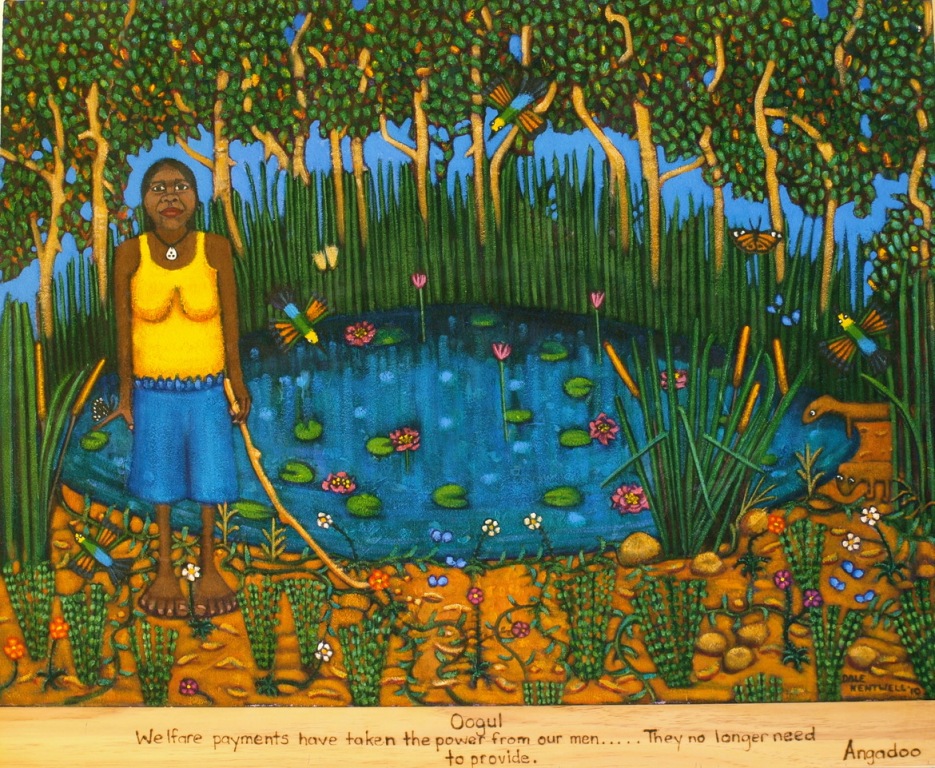
Kathleen / Noor oorang……Kathleen and I shared a passion for understanding the impacts of fire, over and under burning our bushland……..she also had the beautiful and powerful message
‘ they want to take our land and give us money……You are going to do a lot of damage with that money’
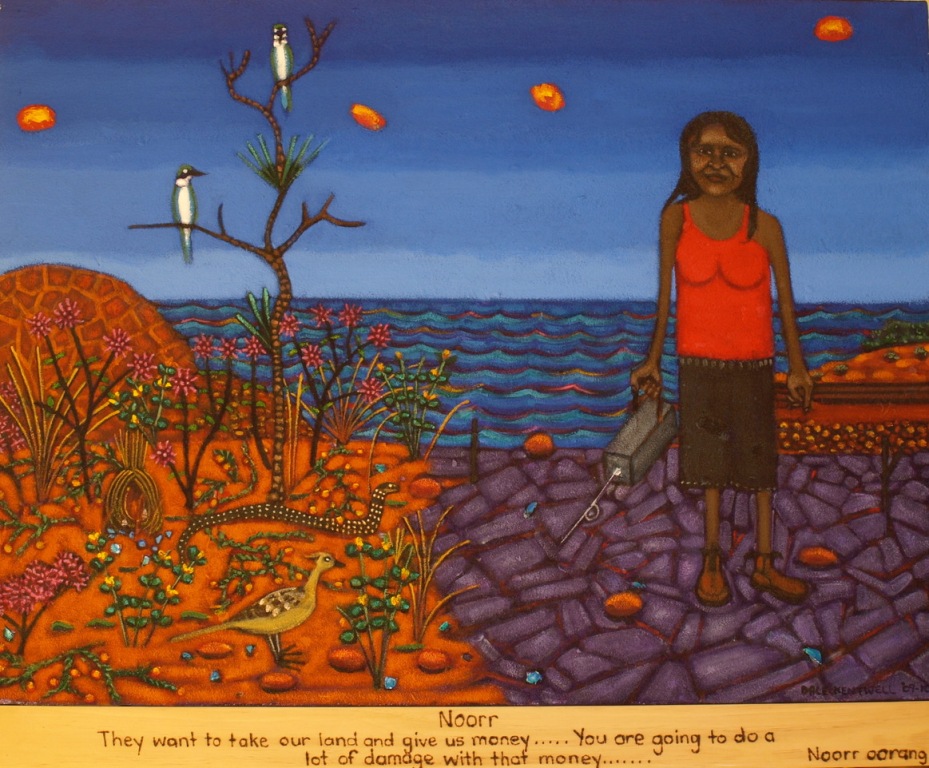
and Pancho, who after I sketched his portrait, was humbled, When I asked him what he wanted to say, he picked up my sketch book and pencil and wrote ‘Thank you’…..I was incredibly humbled.
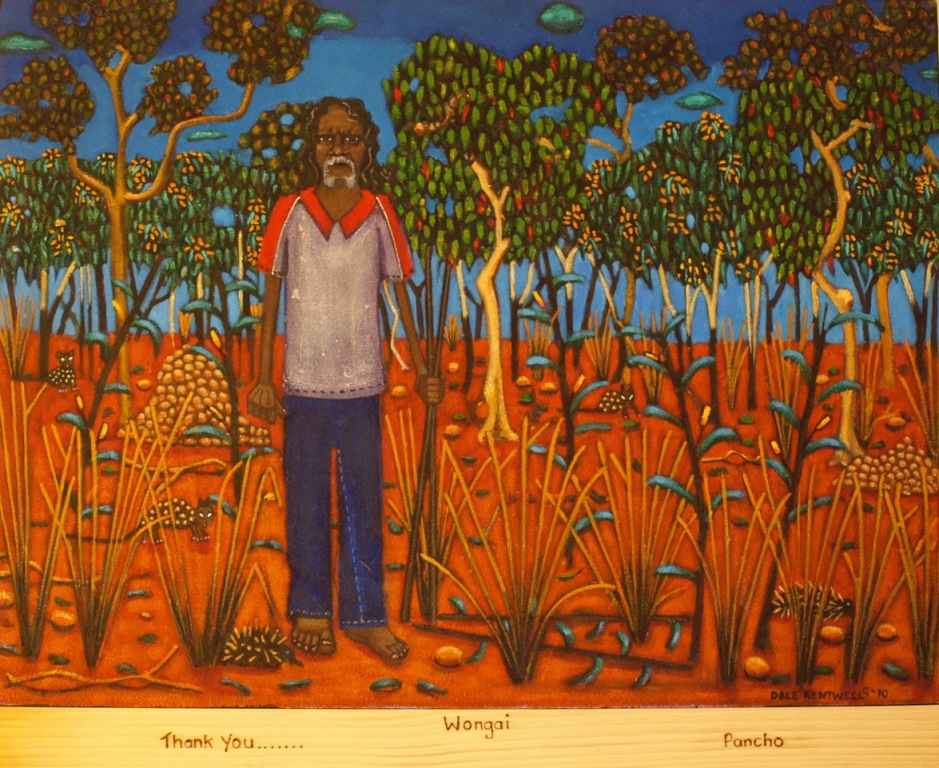
Sally Mayman
Where did you grow up-what did you do for fun?I grew up in the bush backing onto the Lane Cove River National Park. We spent what seemed like endless days just messing around having adventures and making super 8 films. Harry Butler in the wild and the Six Million Dollar Man seemed to influence many of these! Saturdays I was always playing sport, Sundays we often came to the northern beaches to surf. Holidays were also in the bush and in later years the beach so I’ve always felt connected to both.
In the 1990’s my husband Gerry and I spent a few years renovating a yacht and learning how to sail her ( a steep learning curve for me ) with the plan to circumnavigate the globe. Preparation also included studying meteorology, coastal navigation and celestial navigation at Pittwater TAFE, thankfully we never needed the sextant in earnest. Most weekends we explored the Harbour or Pittwater, even spending our honeymoon in Smith’s creek, learning to bake bread in our little oven! Sailing to the top of Queensland was an amazing experience, memories of Humpback whales singing through the hull and moonlit nights with dolphins staying next to the cockpit for my entire three hour shift, (maybe they found my conversation entertaining!) seem surreal now. We both had plans and projects to get on with so after nine months living in tune with the tides, moon and sea life we sailed back into Pittwater where we have loved living and raising our two boys for the last twenty years. They have both embraced this unique lifestyle.
What was the first creation which made you aware of visual communication?
While in year 10 we visited a local nursing home. For some reason I was photographing the excursion while also taking portraits of the clients. The local paper ran one of my images which gave me enormous confidence but more importantly the realisation that a photograph could tell a story about someone and capture things that other people didn’t necessarily see.
How did you pursue this?
After High School I went on to study photography for 4 years while assisting some excellent photographers. Tim Hixson, Gary Grealy, Robert Morehead and Scott Cameron all shared a studio space in North Sydney where there was always something interesting happening.( If not we were improving our table tennis skills!) There was a wonderfully creative atmosphere and they really impressed upon me the importance of always maintaining your personal work.
Working in London was extremely different, I worked with women photographers for the first time! Scary that it wasn’t even that long ago! I soon realised the advertising studio scene was not for me. I have to thank my brother for encouraging me to continue being a photographer as I was fairly disillusioned about the usefulness of photography at the time, “ use the gifts you have, create awareness that can lead to change. “ An eleven month trip through Africa certainly changed my perspective on life, reinforcing a desire to tell peoples stories and create change. Working as the photographer on a Raleigh International Youth expedition for three months in Guyana, South America was also a profound experience which led to years of voluntary work in outdoor youth education. (I’m sure my passion for teaching photography and mentoring young people, also stems from this positive experience.) The “Intimate Witness” exhibitions 1994 from work created in Africa and Guyana, raised money for Austcare which then led on to years working with Mission Australia. I’ve always loved how one project flows onto another.
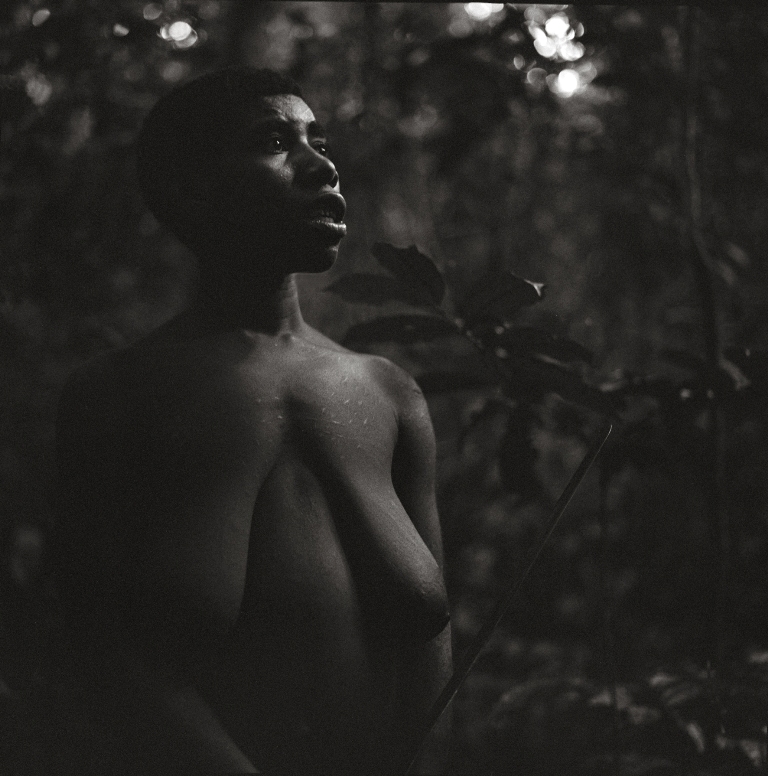
Babette
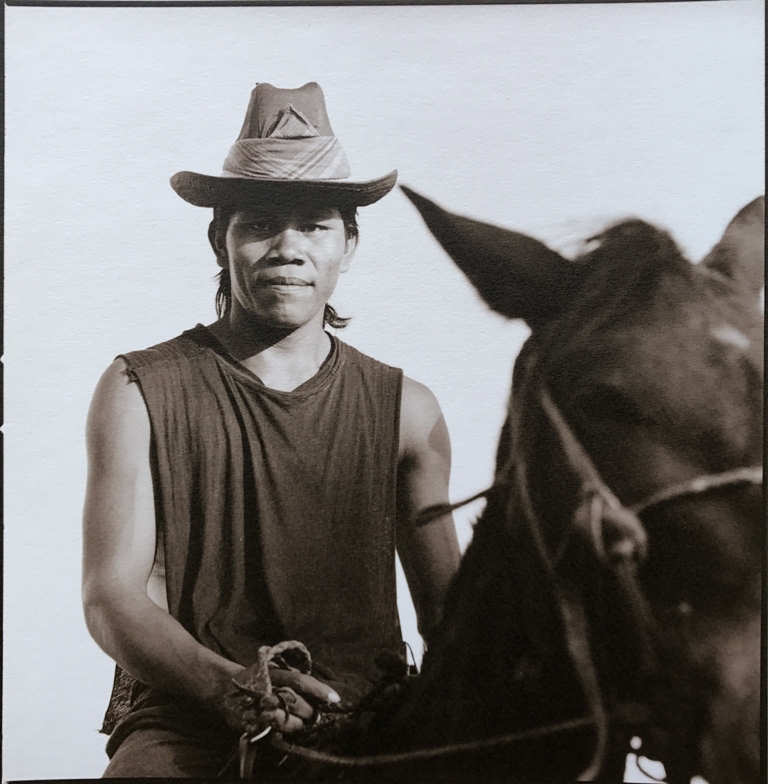
Linden
In 1996 I was presenting at a Photographers conference in the Barrosa Valley and after seeing my portraits from my times living with the Pygmy and Amerindian people David Moore asked when I was going to work with Australian Aboriginal people? This yearning had always been with me, I knew somehow it would happen one day.
My recent art practice has been informed by living in Pittwater with several bodies of work inspired by this wonderful place and people. Having been a specialist in B/W darkroom and old processes I’m so happy to have experienced the digital revolution and lived during a period of such great change. I am currently completing a Masters of art, and being surrounded by new and constantly evolving technology is extremely exciting.
The Great Outdoors - what drew you to this?
My childhood was spent outdoors, I never really wanted to go in when night came. I’ve always loved the liminal or transitional times, dawns and dusks, the way light & energy changes. Now I actually feel quite restless if I can’t be outside at these times.
Our holidays were four week camping adventures to somewhere far away; Darwin after cyclone Tracey, the Simpson Desert, Uluru, Tasmania. My Dad was a geophysicist who had spent ten years living in the bush. We camped in many remote, untouched and beautiful places and he impressed upon us the importance of understanding our own country. In teenage years this led to an appreciation and then a desire to look after and protect our many unique places in Australia.
My first exhibition in 1990 ”Beach Faces and Wilderness Places” was a collaboration with painter Mark Hayes and in conjunction with the Wilderness Society. We had captured the wilderness of South West Tasmania through painting, photography and poetry, these were juxtaposed with portraits of people in Manly where we lived. We encouraged viewers to consider how they live and the impact they have on their environment.
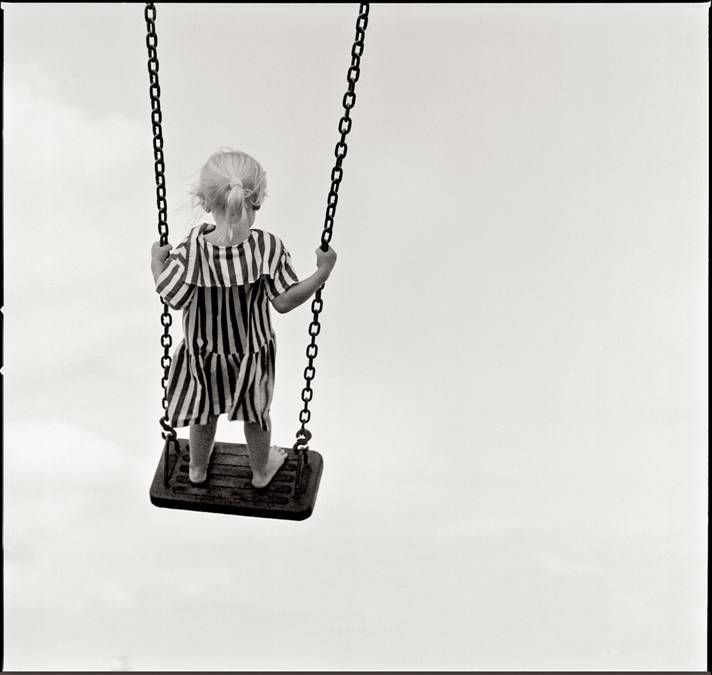
Beach Faces and Wilderness Places
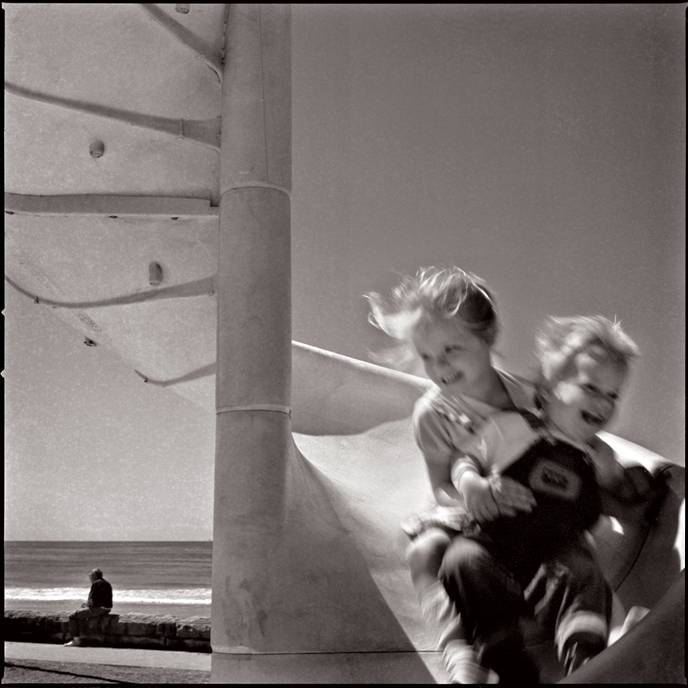
Beach Faces and Wilderness Places
My connection to this country comes from my own life experiences, it is strong enough that at times I just need to go and sleep on the ground and feel the earth. Connection to the environment and sense of place is important to everyone. There is little wonder it is particularly significant to Aboriginal Australians. As Deborah Bird Rose explains “Country is a living entity with a yesterday, today and tomorrow, with a consciousness, and a will toward life. Because of this richness, country is home, and peace; nourishment for body, mind and spirit; heart’s ease.”1
How did your connections with the Dampier Peninsula communities commence?
In 2007 our family travelled around Australia as I wanted our children to appreciate first-hand the beauty as well as history of Australia. I also wanted them to appreciate how special Pittwater is and never take living here for granted. We spent a few unique weeks on the Dampier Peninsula with local families, listening, learning, connecting and beginning to understand some of the issues Aboriginal people are facing. A year later when Dale and I were beginning discussions around this project we met Albert Wiggan, a young Bardi Nyul Nyul leader at a Wilderness Society event here in Avalon. It’s purpose was to raise awareness about the proposed Kimberley gas hub. Albert welcomed us to come to country and felt what we were proposing was important. This was the positive endorsement we needed as we wanted to collaborate with the communities from the beginning. Kirsty Cockburn also gave us many contacts as she had been working with the communities fighting the proposed gas hub.
Once we were there, talking with community members, making new friends, we were given more contacts, so by word of mouth we met many people who wanted to be involved in the project.
What was the spark?
The spark was probably more of a glowing ember! Coming home from our family adventure I kept thinking about the families we had met and their stories and how important they were. I felt they really needed to be shared so a wider audience could also begin to understand the issues they raised. When the gas plant was proposed at James Price Point it sparked the need for immediate action, now this unique place and people were under immediate threat.
How has this project seen your many interests and skills come together?
I’ve always been interested in people’s stories and the importance of our physical, emotional and spiritual connection to our environment. This work is about, listening, telling peoples stories, creating awareness and change as well as celebrating these peoples connection to country. Many of the practical skills learned from previous experiences such as crossing the Sahara desert came in handy when digging our bogged car out of the sand!
Why did you want to do this?
I knew these stories were important and I hoped if a wider audience heard them other people would begin their own journey of understanding. We have much to learn from the wisdom and depth of Aboriginal peoples spirituality and knowledge in respect to looking after country. As this is everyones responsibility we need to do it together.
Why collaborate with Dale?
I have always loved collaborating on projects, bringing different mediums and perspectives together. Dale and I met through our sons while they were at Avalon Primary school. I loved her” Mum” series, I had also been working on a series inspired by motherhood and could immediately connect with the conflicting emotions in her paintings. Dale and I compliment each other, she sees me as dynamic and herself a plodder, I feel she is grounded and keeps me on track. We both believe artists have an important role in encouraging people to connect with how they feel even if it is confronting.
How long did it take?
The whole project took a couple of years, several trips spending time with the communities and then months putting the work together. It was an intense time, juggling family life commercial work and this project. After the initial exhibition at Manly Art Gallery and Museum in 2010 we exhibited at North Head in conjunction with the Wilderness Societies save the Kimberley campaign, Glen Street Theatre and The Rocks as part of the Head On photographic festival. I also produced a slide show that was a finalist in the Walkley Foundations slide night awards. After this both Dale and I needed a break and returned to commercial work, putting our plans for a book and permanent home for the collection on hold. In 2014 we regrouped, built a website and put our minds to our final goals. In 2015 the State Library of Western Australia offered to house the entire collection. This acknowledgement of the works cultural significance had a very positive effect within the communities. With the publication of Seeing Saltwater Country, this beautiful book we have finally completed the circle, except now we want to take it on tour!
How did you go about completing the project?
We needed to fund the project, so we wrote many grant applications, receiving a much appreciated $2000 seed grant from the Australian Geographic society. This helped us fly to Broome in 2009. Both Dale & spent many hours listening to stories, learning and writing. I captured community members where we were, taking a large sketch pad for their stories, while Dale bought her sketches and ideas back to the studio.
I run photographic workshops for the Moran Arts Foundation for primary and high school students around Australia and was delighted to run these in the remote community schools. It was lovely to give each student a camera for the day and see their excitement as they created their own visual stories.
The whole process was extremely rewarding, what stands out are the friendships we made and stories we shared. To connect & work with these people, learn, understand, slow down and be part of country for a couple of weeks at a time was an amazing and soul enriching experience. It was a privilege to be trusted with recording these stories.
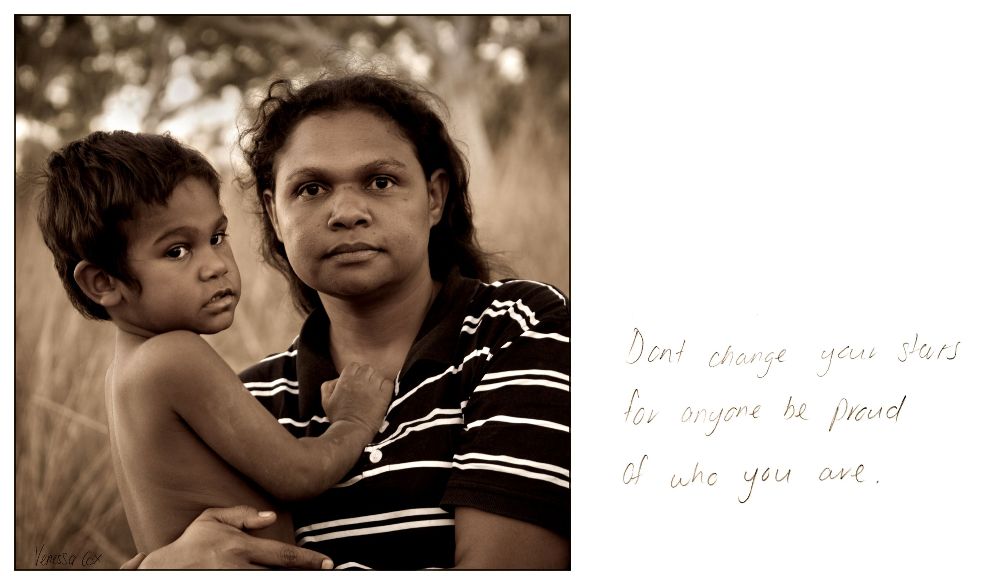
Portrait of Venessa Cox and Zirren
In every portrait I included the collaborators hand written story as well as their signature to give them ownership. Stories were varied covering a variety of social, political and environmental issues affecting daily life.
Portraiture is a true collaboration between photographer and sitter, the result will only be strong if there is trust between you. My deepest thanks to each collaborator for trusting Dale and me to record these stories it was a privilege to be given this opportunity.
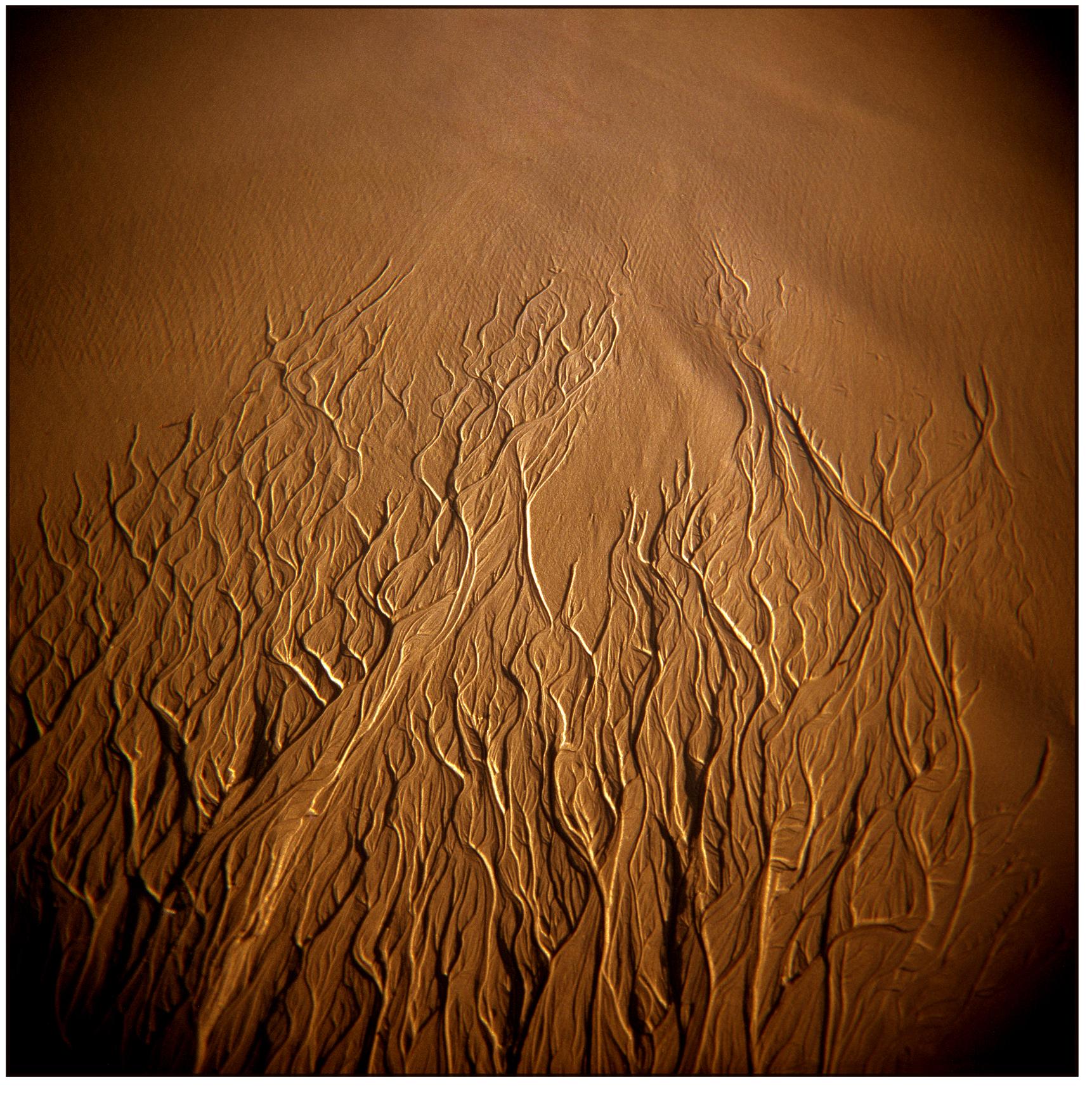
Growing or Burning - Saltwater Country, Sally Mayman
Growing or Burning is one of my favorite landscapes from the collection. I love it’s ambiguity, simplicity and life. It was taken in the liminal zone between land and sea, connecting land management and saltwater. I often used an analogue film camera called a ‘ Holga ‘ it’s simple plastic lens bringing a unique quality to the images. The camera is unpredictable, the antithesis of digital perfection, it teaches you to rely on intuition, slow down and feel what you are seeing, the resulting images being very emotive.Goobaragin is exceptionally beautiful, turquoise sea and golden sand backed by intense red cliffs. The light is superb glowing well after the sun sets. I loved the sand patterns, feeling a sense of time and continual change. It was a heavenly experience to roam with my camera at dawn and dusk every day.
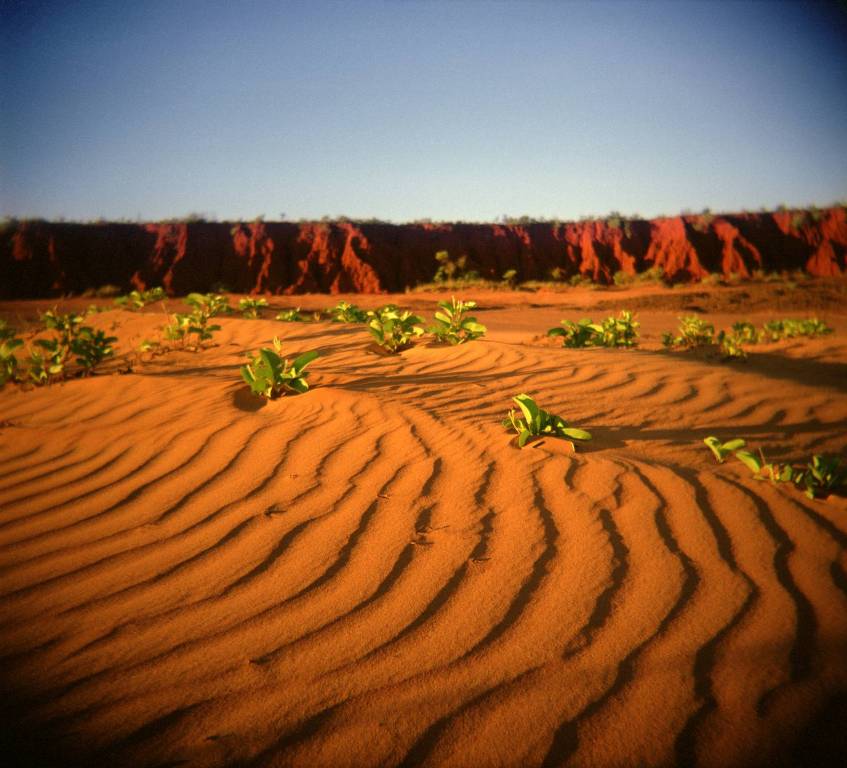
Goobaragin - Saltwater Country, Sally Mayman
What does this work in essence communicate?
This work is about peoples stories and the importance of their connection to country. It celebrates the beauty of a unique part of Australia. I would like to leave you with two quotes....
“ What keeps us strong and proud is our country and culture. Without country we’re nothing” - Albert Wiggan
“Thank you” - Francis Pan
1.D. Bird Rose (1996), Nourishing Terrains: Australian Aboriginal Views of Landscape and Wilderness, Australian Heritage Commission, Canberra, p. 7.
Seeing Saltwater Country
By SALLY MAYMAN And DALE KENTWELL
Foreword by Dr. Jeff McMullen AM
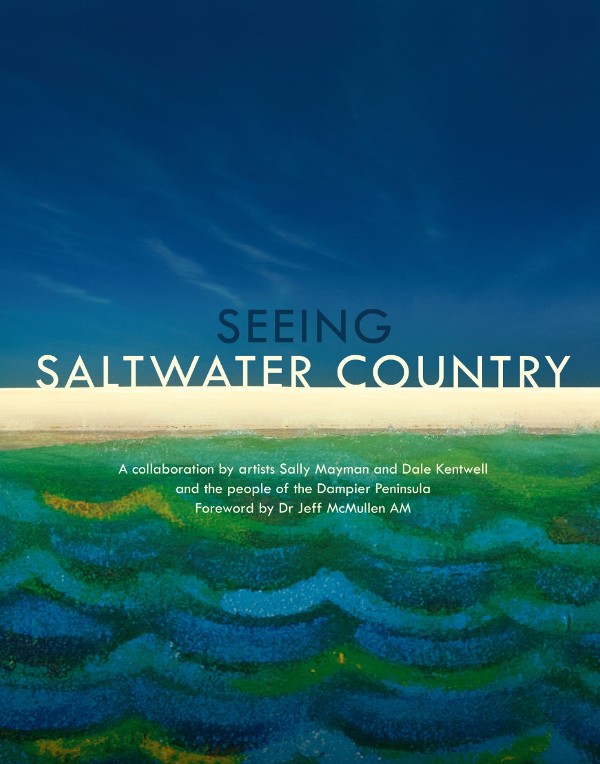 ABOUT THE BOOK
ABOUT THE BOOK The Dampier Peninsula in Australia’s north-west is home to many remote Aboriginal communities. Painter Dale Kentwell and photographer Sally Mayman have collaborated with the people of the region in a series of portraits that depicts remote community life and celebrates the beauty of a place unlike any other. At the heart of these portraits is a strong and enduring connection to country.
ABOUT THE AUTHORS
Sally Mayman has been a photographer since the 1980s, working professionally in London and Australia. Sally has specialised in photographing people and landscapes, with many clients from corporate, editorial, not for profit and government organisations. She has always maintained her personal practice and is currently completing a masters of Art at UNSW Art and Design.
Sally is current Artist in Residence at Barrenjoey High School and running an Arts Program at The Beach School at Allambie Heights with an Exhibition opening this Friday night.
Dale Kentwell has been a practising artist since the 1980s and works across different media. She completed an art certificate at TAFE NSW and a BA and MA in visual arts at UNSW Art and Design. She has studied bush regeneration and bush land management and continues to work in this field.
Dale is currently working on a series focused on Bush Reparation, sculptures of animals and works using bark.
This book will appeal to people interested in art and photography and to those wanting to learn more about Aboriginal cultures and communities. It will also appeal to tourists visiting Australia’s popular Kimberley region.
The beautiful artwork featured is the result of a unique collaboration by artists Sally Mayman and Dale Kentwell with the people of the Dampier Peninsula. The authors have pledged to donate their royalties from sales of the book to the Dampier Peninsula communities to support further arts initiatives.
The Dampier Peninsula is often in the news: most recently for the discovery of the world’s biggest dinosaur footprint in a region now recognised as one of the richest and most diverse for dinosaur tracks. Previously the Dampier Peninsula was associated with the local communities’ successful fight to save the area from becoming the site of a natural gas plant.
Pub. Date September 2017
ISBN 9781925163704
RRP $45.00 AU
Genre Art, photography, Indigenous cultures
Format HB with jacket 275 h x 216 w mm
Extent 104 pp
By Freemantle Press - buy online - read Sample Chapter and Teaching Notes
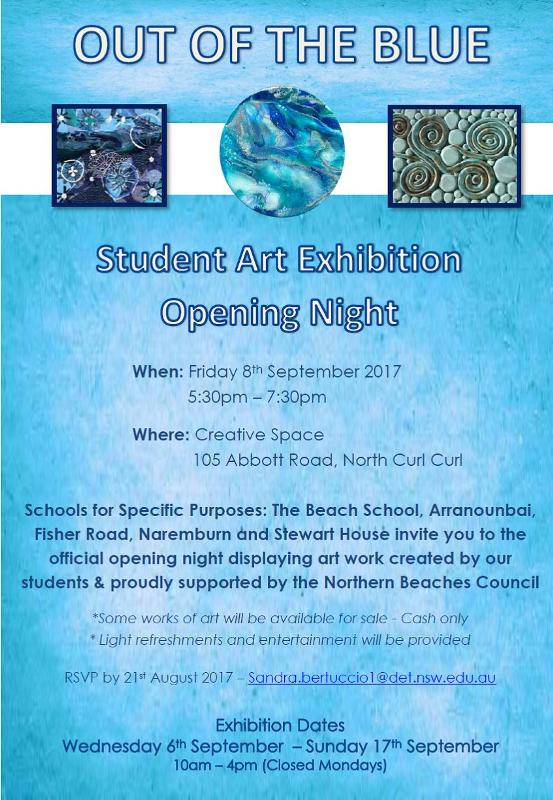
__________________
Writers Live - Sally Mayman and Dale Kentwell introduce Seeing Saltwater Co...
by Berkelouw Books, Mona Vale
You are invited to meet Sally Mayman and Dale Kentwell when they introduce their new book Seeing Saltwater Country.
The Dampier Peninsula in Australia's north-west is home to many remote Aboriginal communities, Painter Dale Kentwell and photographer Sally Mayman have collaborated with the people of the region in a series of portraits that depicts remote community life and celebrates the beauty of a place unlike any other. At the heart of these portraits is a strong and enduring connection to country.
"Sally Mayman and Dale Kentwell, with the camera and the canvas, have beautifully conveyed in an honest and warm-hearted way what country means to the Aboriginal people living on Saltwater Country in the Dampier Peninsula. Listen to their stories. Listen to the country sing to us all." - Dr. Jeff McMullen AM
DATE AND TIME: Thu. 21 September 2017, 6:30 pm – 8:00 pm
LOCATION: Berkelouw Books
12-14 Park St
Mona Vale, NSW 2103
